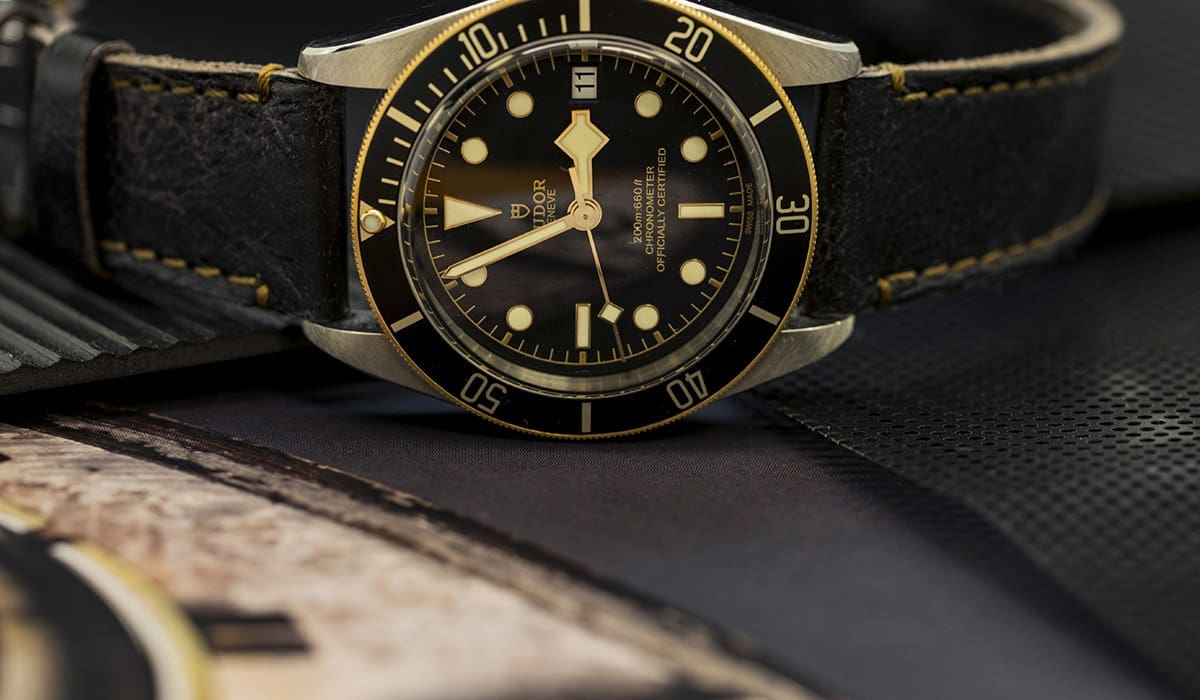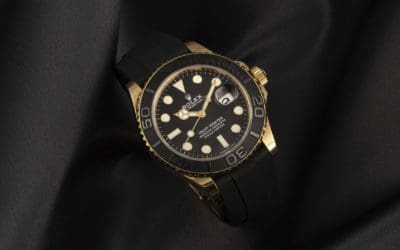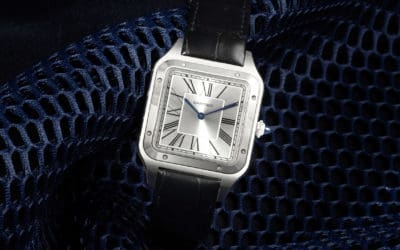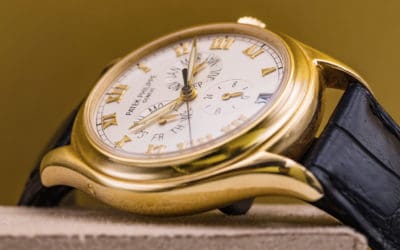In a world driven by fleeting trends and evolving styles, a designer watch stands as a timeless testament to craftsmanship, precision, and enduring elegance. Beyond its functional purpose, a meticulously crafted timepiece is an investment that transcends generations, often becoming an heirloom cherished for its intrinsic value. Yet, like any valuable asset, a designer watch requires vigilant care and attention to ensure its longevity and to appreciate its worth.
Caring for a designer watch is not merely an act of preservation; it’s a commitment to enhancing and protecting its value. Every meticulous cleaning, every cautious winding, and every thoughtful storage decision is a testament to the reverence we hold for the remarkable artistry of luxury watches such as Rolex, Patek Phillipe, and Omega.
“Investing in Time: How to Protect and Enhance Your Designer Watch’s Value” is a comprehensive guide crafted for aficionados, collectors, and enthusiasts alike. We delve deep into the art of watch care, sharing advice aimed at safeguarding your prized possession. From maintenance rituals to insightful tips on preserving the lustre of your timepiece, this guide is tailored to lead you in the preservation of a legacy—a legacy with a value you may wish to realise in the future.

Understanding Your Designer Watch
Let’s begin by considering how the choice of materials and craftsmanship significantly contributes to the overall value as well as the aesthetic appeal of a designer watch.
Craftsmanship
Designer watches are crafted with unparalleled precision and expertise. Each component, from the movement to the case, is assembled by the highest skilled horologists. The intricate inner workings of a watch, known as the movement, can be mechanical (powered by a mainspring and regulated by a balance wheel) or quartz (relying on a battery-operated oscillator). The assembly process demands an extraordinary level of skill, ensuring the watch functions with utmost accuracy.
Case Materials
- Renowned for its durability and resistance to corrosion, stainless steel is a popular choice for watch cases. It provides a sleek, modern aesthetic while offering robust protection to the internal components.
- Watches crafted from gold, platinum, or other precious metals exude opulence. These materials not only enhance the watch’s value but also contribute to its distinctive appearance.
- Known for its lightweight yet sturdy properties, titanium is favoured for its comfort on the wrist. It’s highly resistant to corrosion and is often used in high-end sports watches.
- A contemporary choice, ceramic offers exceptional scratch resistance and a modern, matte finish. It’s commonly used for bezels and cases in luxury timepieces.
Dials
- The same materials used in cases are frequently also used for watch dials. Other metals such as brass and copper alternatively can be gold-plated or left in their natural colour. They offer a warm, traditional appearance.
- Highly regarded for an exquisite finish, enamel dials are created through a labour-intensive process of fusing powdered glass onto a metal surface. They boast a smooth, glossy appearance and are favoured for their enduring beauty.
- Known for its iridescent shimmer, mother-of-pearl dials lend an elegant touch to women’s watches. Each piece is unique, adding a touch of natural beauty to the timepiece.
Strap and Bracelet Materials
- Leather straps, often made from high-quality calfskin or exotic hides, offer a classic, sophisticated look. They are comfortable and can be easily customised.
- Crafted from stainless steel, gold, or other metals, bracelet-style straps provide durability and a polished appearance. They are a staple in many luxury watches.
- Rubber and Fabric materials are favoured for their sporty and casual appeal. They offer flexibility, and comfort, and are often featured in sports and dive watches.
Crystal
Known for its exceptional hardness and scratch resistance, sapphire crystal is the standard for high-end watches. It ensures a clear view of the dial and protects against everyday wear.
Bezel Inserts
Ceramic Inserts are normally used in rotating bezels, they provide excellent scratch resistance and vibrant colour options. They’re popular in dive watches for their durability.
A Valuable Asset
Beyond the general craftsmanship of a watch, further elements help determine both the financial and emotional value of any timepiece.
The Influence of Exotic Materials
Exotic materials like mother-of-pearl, meteorites, and rare gemstones can significantly enhance a watch’s value. Mother-of-pearl dials, known for their iridescent shimmer, add an ethereal touch and are often seen in high-end women’s watches.
Meteorite dials, crafted from authentic space rock, are prized for their uniqueness and rarity, making them highly collectable. Watches adorned with rare gemstones, such as diamonds or sapphires, not only increase the visual allure but also elevate the watch’s intrinsic worth.
The quality, cut, and rarity of these gemstones contribute to their impact on the overall value of the timepiece.
The Impact of Brand Legacy
In addition to materials, the brand’s legacy and reputation also have a profound influence on a watch’s value. Timepieces from renowned and long-standing watchmakers often command higher prices due to their established heritage and history of excellence.
Collectors and enthusiasts are willing to invest in watches from brands with a proven track record of craftsmanship and innovation. This legacy adds an intangible, but undeniably significant, premium to the watch’s value, reflecting the brand’s enduring influence on the world of horology.
Iconic brands such as Cartier, Bvlgari and Chanel, perhaps recognised foremost for jewellery, also excel in watch design adding an extra level of special appeal for collectors of each. Cartier Tank, Ballon & Panthère watches are excellent examples.
Unique Features That Elevate A Designer Watch’s Value
Complications
Complications refer to additional functions beyond basic timekeeping. These can include features like chronographs (stopwatch), moon phases, tourbillons (a rotating escapement), perpetual calendars, and more. Each added complication requires intricate engineering and craftsmanship, enhancing the watch’s complexity and value.
Limited Editions
Limited edition watches are produced in restricted quantities, making them highly sought after by collectors. They often commemorate significant events, and collaborations, or pay tribute to historical milestones. The exclusivity and rarity of these pieces significantly contribute to their value.
Metiers d’Art
Metiers d’Art, or “artistic crafts,” involve intricate techniques like enamelling, guilloché (intricate engraving), marquetry, and gem-setting. These techniques require exceptional skill and artistry, resulting in timepieces that are not only functional but also exquisite works of art.
Hand-Engraved Movements:
Movements that are meticulously hand-engraved exhibit a level of artistry and craftsmanship that elevates their value. Each engraving is a unique work of art, showcasing the skill of the watchmaker.
Skeletonised Movements:
Skeletonised movements are intricately cut away to reveal the internal workings of the watch. This technical feat not only showcases the craftsmanship but also allows the wearer to appreciate the mechanical intricacies.
Innovative Materials
Innovative materials like carbon fibre, ceramic, or high-tech alloys can enhance a watch’s durability and aesthetic appeal. These materials are often associated with high-performance and sports-oriented timepieces.
Artisanal Dial Techniques
Techniques like cloisonné (an enamel technique) and guilloché add depth and visual interest to watch dials. These techniques require a high level of skill and attention to detail, contributing to the watch’s artistic value.
Customisation Options
Some designer watchmakers offer customisation options, allowing clients to personalise their timepieces. This can include selecting different materials, and colours, or even incorporating special engravings, making the watch uniquely valuable to its owner. The rarity created has the potential to differentiate the value of the watch model.
Avoiding Common Pitfalls
One of the most common mistakes that can significantly devalue a designer watch is neglecting regular maintenance. Watches, especially those with intricate mechanical movements, require periodic servicing to ensure they function optimally.
Failing to adhere to recommended service intervals can lead to issues like reduced accuracy, compromised water resistance, and even potential damage to internal components. Over time, this neglect can accumulate, resulting in a decrease in the watch’s overall value. Collectors and enthusiasts alike should prioritise routine maintenance to preserve the watch’s integrity and enhance its long-term worth.
To avoid the detrimental effects of neglecting regular maintenance, establish a diligent servicing schedule for your designer watch. Familiarise yourself with the manufacturer’s recommendations for service intervals, and adhere to them faithfully.
Engage the services of a reputable watchmaker, authorised jeweller or pawnbroker with expertise in your specific timepiece brand. Regular servicing involves a thorough inspection, cleaning, lubrication, and potential replacement of worn components.
By proactively addressing any potential issues, you’re not only ensuring the watch’s continued accuracy and functionality but also preserving its long-term value.
Improper Storage Conditions
Another prevalent error that can devalue a designer watch is inadequate storage. Watches are susceptible to environmental factors such as extreme temperatures, moisture, and dust. Storing a watch in suboptimal conditions, such as a damp or excessively hot environment, can lead to accelerated wear and potential damage.
Likewise, leaving a valuable timepiece exposed to dust and particles can lead to scratches and hinder its aesthetic appeal. Investing in a suitable watch box or case with proper cushioning, moisture resistance, and climate control features is essential in safeguarding the watch’s condition and maintaining its value.
Incorrect Handling and Wearing Practices
Improper handling and wearing habits can also contribute to the devaluation of a designer watch. For instance, subjecting a watch to harsh impacts or rough handling can lead to visible dents, scratches, or even internal damage.
Additionally, failing to follow manufacturer recommendations regarding water resistance can result in water intrusion, which can be detrimental to the movement. Furthermore, wearing a watch in situations where it’s not suited, such as during high-impact activities with a dress watch, can lead to unnecessary wear and tear. Adhering to proper wearing and handling practices ensures the watch remains in optimal condition and retains its value over time.
Avoiding these common mistakes is crucial in maintaining the value and integrity of a designer watch. By prioritising regular maintenance, providing proper storage, and adhering to recommended handling and wearing practices, enthusiasts can ensure their cherished timepieces retain their worth and continue to be valued assets for years to come.
The Importance Of Routine Maintenance
A designer watch is more than just a timekeeping instrument; it’s a marvel of engineering and craftsmanship. However, like any finely tuned machine, it requires regular care and attention to ensure it continues to function flawlessly.
Routine maintenance and servicing is not merely a precautionary measure, but a fundamental practice in preserving and enhancing the value of this treasured accessory, even when unworn.
Safeguarding Precision
The heart of a watch, its movement, comprises intricate gears, springs, and balance wheels working in unison. Over time, tiny particles of dust or wear and tear can disrupt this delicate function. Regular servicing by a skilled watchmaker ensures that every component is in optimal condition, maintaining the watch’s accuracy and precision.
Preventing Wear and Tear
Watches, particularly those worn daily, are subjected to a multitude of environmental factors. Moisture, dust, and temperature fluctuations can all take their toll on the internal mechanisms. Routine maintenance includes cleaning and lubricating the components, safeguarding against premature wear and potential damage.
Preserving Aesthetics
The external elements of a watch, such as the case, crystal, and dial, are exposed to various elements. Scratches, tarnishing, or dirt can diminish its visual appeal. Proper maintenance involves professional cleaning and polishing, restoring the watch to its original lustre and ensuring it continues to make a striking impression.
Detecting Early Issues
During routine maintenance, a skilled watchmaker can identify and rectify potential issues before they escalate. This proactive approach not only prevents costly repairs but also ensures the watch remains in impeccable condition, enhancing its overall value.
Maintaining Water Resistance
Many designer watches, especially those designed for sports or diving, boast water-resistant features. Over time, seals and gaskets may deteriorate, compromising this vital function. Regular maintenance includes inspecting and replacing these components, guaranteeing the watch’s continued resistance to water.
Preserving Historical Value
For vintage or heritage watches, routine maintenance is even more crucial. These timepieces often have unique movements and may be more susceptible to the effects of time. Regular care not only keeps them in working order but also ensures their historical and collector’s value remains intact.
In essence, routine maintenance is an investment in the longevity and value of a designer watch. It upholds the integrity of its craftsmanship, safeguards its precision, and allows it to stand the test of time as a cherished and valuable heirloom.
Storing Your Designer Watch
A designer watch deserves special storage. Even the most robust timepieces are not immune to the effects of improper storage. Here’s why investing in suitable storage for your designer watch is imperative.
Protection from Physical Damage
When left exposed, a watch is vulnerable to scratches, dents, and other forms of physical damage. Proper storage in a watch box or case provides a cushioned environment, shielding it from accidental impacts and abrasions.
Preventing Moisture Intrusion
Moisture is a watch’s silent adversary. It can lead to rusting of internal components, damage to the movement, and deterioration of seals. A designated watch storage solution with moisture-resistant properties helps protect against this threat.
Avoiding Temperature Extremes
Extreme temperatures, whether hot or cold, can affect a watch’s delicate movement and materials. Storing a watch in a controlled environment, away from direct sunlight or harsh temperature fluctuations, helps maintain its optimal performance.
Reducing Dust and Particle Exposure
Dust and microscopic particles can find their way into a watch’s intricate movement, causing friction and potential damage over time. A sealed watch box or case provides a barrier against these harmful intruders, ensuring the inner workings remain pristine. Cleaning and caring for your watch and precious jewellery is essential to preserving its beauty and value. By using Hagerty care products, you can be sure of providing the best possible care for your luxury valuables. From steel watch bands to diamond, gold and silver jewellery, Hagerty offers effective and reliable solutions for every need. Adopt these care practices and your precious objects will continue to shine for generations to come.
Preserving Aesthetics and Finishes
The exterior of a watch, including the case, crystal, and dial, is susceptible to tarnishing, fading, or discolouration when exposed to environmental elements. Proper storage helps retain the watch’s original lustre and visual appeal.
Preventing Strap and Bracelet Damage
Leather straps, in particular, are susceptible to deterioration when exposed to moisture, sunlight, or rough surfaces. Storing a watch with its strap properly supported and protected helps prolong its lifespan.
Watch winding
Watch winders are devices that keep automatic (self-winding) watches running when they are not being worn. Automatic watches rely on the motion of the wearer’s wrist to wind the mainspring and power the timekeeping mechanism.
When not worn, they can stop, requiring manual winding or resetting of the time. Watch winders rotate the watch gently, simulating the motion of a wrist, which ensures that the watch is always accurate and ready to wear. Combined watch storage and watch winder units essentially merge the functionality of both watch storage and watch winding into a single piece device.
It can allow watch collectors to showcase and store their valuable timepieces while ensuring they remain functional and accurate, even when not in use.
Maintaining Resale and Collector Value
For collectors or those considering resale in the future, a well-preserved watch commands a higher value. Proper storage demonstrates a commitment to maintaining the watch’s condition, which is a key factor for potential buyers.
Organised Access and Display
A dedicated watch storage solution provides an organised and aesthetically pleasing way to display your collection. It allows you to appreciate and access your watches easily without the risk of mishandling.
Preserving Sentimental Value
A watch may hold sentimental value, passed down through generations or received on a special occasion. Proper storage ensures that it remains a cherished heirloom for years to come.
In essence, proper storage is an investment in the longevity, functionality, and aesthetic appeal of your designer watch. It is an essential practice for any watch enthusiast, ensuring that each timepiece continues to shine as a testament to its enduring craftsmanship.
Documenting and Certifying Your Watch
Proper documentation is an often overlooked but crucial aspect of preserving the value of a designer watch. It serves as a tangible record of authenticity and ownership, offering crucial insights into the watch’s history. Documentation includes certificates of authenticity, original receipts, warranty cards, and any service or repair records.
These documents not only validate the watch’s authenticity but also provide valuable information about its specifications, model, and manufacturer. In the event of resale or appraisal, comprehensive documentation can significantly enhance the watch’s credibility and value.
Additionally, for collectors, historical documentation can add a layer of provenance, tracing the watch’s journey through time and potentially increasing its desirability and worth.
Tips for Preserving Certificates of Authenticity and Receipts
Preserving certificates of authenticity and receipts is essential for maintaining the integrity and value of a designer watch. Firstly, it’s advisable to store these documents in a dedicated folder or envelope, separate from the watch itself.
This helps prevent any potential damage from contact with the watch or other materials. Secondly, consider making digital copies or scans of the documents as an added precaution. Store these digital copies in a secure location, such as a password-protected folder on your computer or a cloud-based storage platform.
This back up ensures that even if the physical documents are lost or damaged, you still have a digital record.
To further protect the documents, consider using acid-free archival sleeves or folders. These materials are specifically designed to prevent degradation and discolouration over time.
Store the documents in a cool, dry place, away from direct sunlight or extreme temperatures. Avoid exposing them to moisture or high humidity, as this can lead to deterioration. Finally, periodically check the condition of the documents and consider re-archiving them if you notice any signs of wear or degradation.
By following these tips, you can ensure that your watch’s documentation remains in pristine condition, preserving its value and authenticity for years to come.
Proper documentation not only adds credibility to a watch but also serves as a valuable resource for collectors, enthusiasts, and potential buyers. By following these preservation tips, you can safeguard the authenticity and value of your designer watch and its accompanying documents.
Knowing When to Seek Professional Help
Selecting a reputable watchmaker or jeweller in the UK is a critical step in ensuring the longevity and value of your designer watch. By paying attention to the signs that indicate a need for professional servicing and following these guidelines, you can entrust your cherished timepiece to capable hands. Especially for high value luxury brand watches, it is crucial to check for official watch servicing status.
Inconsistent Timekeeping
If you notice that your watch is consistently running fast or slow, it may be an indication that the movement requires adjustment. This is a clear sign that professional servicing is needed to ensure accurate timekeeping.
Loss of Power Reserve
A noticeable decrease in the watch’s power reserve, where it doesn’t hold a charge as long as it used to, suggests that the movement may need cleaning and lubrication.
Audible Irregularities
Unusual ticking noises, grinding sounds, or any other abnormal auditory cues can be indicative of internal issues. These should be addressed promptly to prevent further damage.
Sticky or Unresponsive Crown or Pushers
If the crown or pushers are difficult to turn or feel sticky, it may be a sign of dirt or dried lubricants within the movement. Professional servicing is necessary to rectify this issue.
Visible Damage or Wear
Scratches on the crystal, dents on the case, or signs of moisture within the watch are clear visual indicators that the timepiece requires professional attention.
Preserving the Emotional Value
A designer watch often becomes part of oneself, a symbol of significant moments and cherished memories. It holds the power to evoke deep emotions, serving as a tangible link to special occasions, milestones, and the people we hold dear.
Whether it’s an anniversary gift, a memento of achievement, or an heirloom passed down through generations, the watch becomes a vessel for treasured stories and enduring connections. Each scratch and patina mark on its surface bears witness to a life well-lived, encapsulating the passage of time and the memories it holds.
The sentimental value attached to a designer watch transforms it into an irreplaceable treasure, an emblem of the moments that shape our lives.
Passing Down the Watch as an Heirloom
Passing down a designer watch as an heirloom is a meaningful gesture that ensures its legacy endures through generations. First and foremost, ensure that the watch is meticulously cared for and professionally maintained. Document its history, including any significant events or anecdotes associated with it.
This written record serves as a heartfelt accompaniment to the watch, providing context and depth to its sentimental value. Consider a family gathering to convey the significance of the heirloom, expressing its role as a tangible representation of familial history. Or simply engage in an open and thoughtful conversation with the chosen recipient. Share the watch’s story and the sentiments it holds, reinforcing the emotional connection.
Encourage the new custodian to continue this tradition of passing down the watch, thereby preserving its legacy for future generations. Lastly, consider having the watch professionally appraised and insured, ensuring that its monetary value aligns with its significance as a cherished heirloom. By following these suggestions, you not only honour the watch’s sentimental value but also ensure that it continues to serve as a piece of family heritage.
Conclusion – An Investment in Material and Emotional Worth
Preserving and enhancing the value of a designer watch requires a multifaceted approach. Regular maintenance, including cleaning, servicing, and ensuring water resistance, is paramount for its longevity and accuracy.
Proper storage in dedicated watch boxes or cases shields against environmental factors, while selecting quality materials and customisation options adds individuality and exclusivity. Investing in reputable service centres and preserving documentation is paramount in protecting a watch’s enduring value.
By adopting these practices, enthusiasts can ensure their timepieces not only retain their material worth but also become cherished symbols of sentimental and historical significance.
Unlocking the value of your luxury watch
The value of your luxury watch or watches provides a strong asset for investment-savvy individuals. You may choose to relinquish custody either temporarily or permanently in order to unlock the value. Perhaps the potential gain in your initial investment offers an opportunity to sell it to realise another life ambition, or even to upgrade to another watch on your Wishlist. Or maybe your watch could provide the security required to acquire a short-term loan for another investment or expenditure.
Regardless of the reason, Suttons & Robertsons have the expertise to support you with a speedy, professional and fully qualified valuation based not only upon the above factors but also taking account of the current market conditions and decades of experience. We offer both fully regulated pawnbroking loans and a watch-purchasing service. We also offer a secure and easy way to ship your watch for sale with us.
Get in touch with us for a quote if you want to unlock the value in your luxury watch. Our expert team is here to guide you through a seamless process. You can be assured that you are in the hands of seasoned professionals who understand the true worth of these time-honoured accessories. Full discretion guaranteed.






